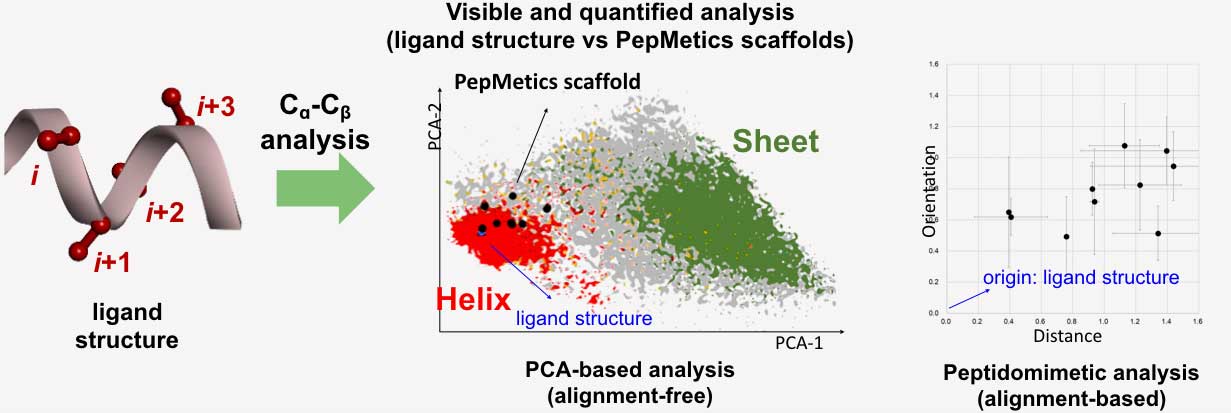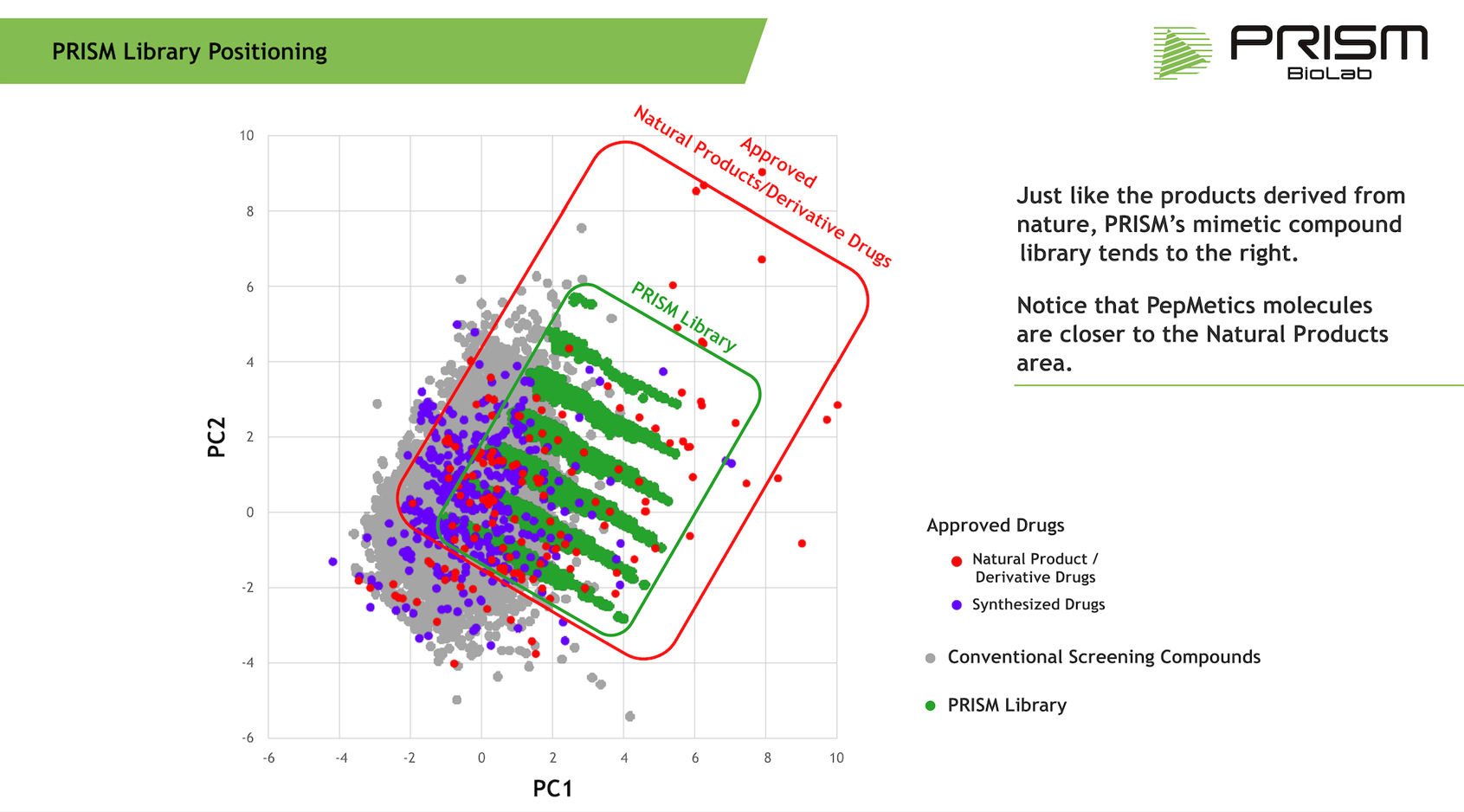PRISM’s unique mimetic technology develops and synthesizes compounds designed to mimic α-helix and β-turn peptides found within the secondary structure of proteins. This technology enables PRISM to modulate intracellular and ectodomain protein-protein interactions (PPIs). PRISM’s proprietary scaffolds allow the precise structural mimicking of peptide scaffolds as well as the flexible arrangement of natural or modified amino acid substituents.
PRISM’s proprietary library includes 20,000+ molecules covering various amino acid sequences for screening
PRISM holds patents on all its compounds, as well as their potential variations based on interchanging scaffolds and substituents.
While we synthesize like a small molecule, our PepMetic Molecules act like peptides.
Nature has shown us that peptides have selectivity and affinity for numerous protein-protein interactions (PPIs). Pharmaceutics have shown that small molecules can be easily synthesized and modified into oral drug formulations. PepMetics™ Molecules combines the best features of both nature and science into powerful therapeutic modalities.
Like small molecules, PepMetics™ Molecules can be readily synthesized while also achieving PPI selectivity and affinity using the precise mimetics of the peptide scaffolds.
PRISM’s mimetics take the shape of naturally occurring helices and turns while maintaining a stable conformation.
PepMeticsTM Molecules maintain the shape and specific secondary structure of the short α-helix and β-turn peptides that are built on their proprietary technology. The stable conformation can diminish entropic loss, significantly improving binding affinities.
The importance of this technology lies within the fact that short α-helix and β-turn peptides cannot exist in nature due to their naturally unstable conformation. PRISM’s proprietary PepMeticsTM Technology enables the creation of short and stable α-helix and β-turn peptide mimetics. Their unique scaffold mimics the natural α-helix and β-turn core, conferring a stable conformation.

In nature, α-helices take many different conformational shapes. They can be bent, stretched, extended, and twisted. It is vital to use the correct scaffold when mimicking the natural ligand structure.
PRISM has developed a proprietary methodology that deploys two types of analysis to measure the similarity of mimetic scaffolds against target ligand structures.
PepMetics™ Molecules have characteristics that can be distinguished from conventionally screened compounds. The table below notes the differences between the conventional small molecules commonly used for high throughput screening versus the PepMetics™ Library. Notice how PepMetics™ molecules are closer to the Natural Products area.
PepMetics™ Molecules can be synthesized via various combinations of elements from the PepMetics™ Library including 40 types of scaffolds and 50 types of side chain.



